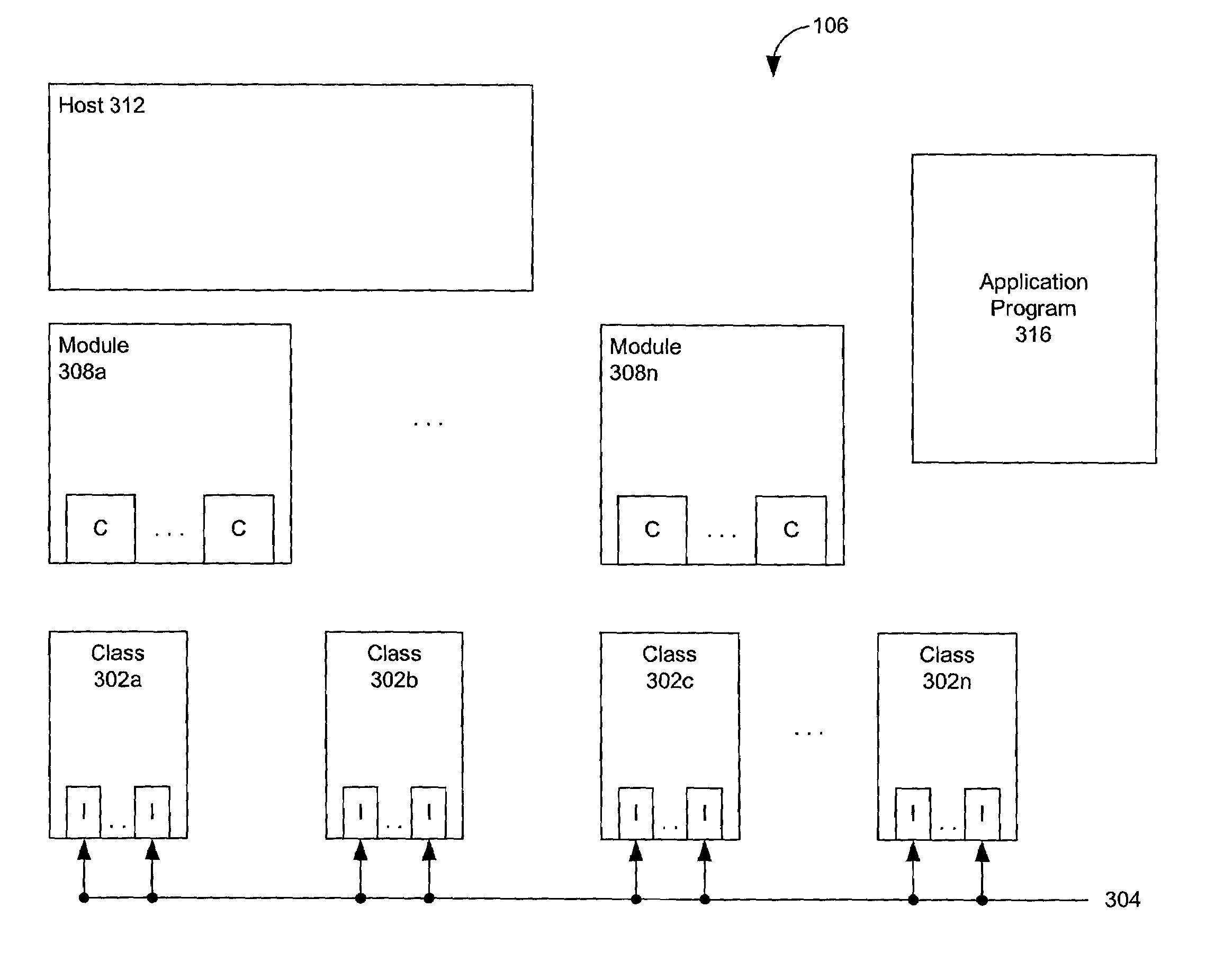Methods and systems for providing platform-independent shared software components for mobile devices
a technology of mobile devices and shared software, applied in the direction of multi-programming arrangements, instruments, program control, etc., can solve the problems of low power capacity, difficult task of developing software components for mobile devices, and limited cpu types that can be used on mobile devices in various ways, so as to reduce the processing power of cpu's and increase the flexibility of programming environments , the effect of conserving the storage space of a mobile devi
- Summary
- Abstract
- Description
- Claims
- Application Information
AI Technical Summary
Benefits of technology
Problems solved by technology
Method used
Image
Examples
Embodiment Construction
An Overview
[0027]Referring to FIG. 1, an overview of the system 100 employing the present invention is described. The software system 106 provides a generic set of software components that are dynamically extendible and deployable across different mobile devices having different architectures and operating systems. The software system 106 includes, among other things, interfaces, classes, modules and a host. Each function is defined as an interface. A class includes zero or more implementations of the interfaces. A module includes zero or more implementations of the classes. A module is a dynamically linkable and executable basic unit. The host manages shared software components by managing the modules. The host enables different modules and classes within the module to find other classes and interfaces.
[0028]The development environment 108 presented via the desktop computer 102 allows software developers to use application programs, for example, Visual Basic from Microsoft Corporat...
PUM
 Login to View More
Login to View More Abstract
Description
Claims
Application Information
 Login to View More
Login to View More - R&D
- Intellectual Property
- Life Sciences
- Materials
- Tech Scout
- Unparalleled Data Quality
- Higher Quality Content
- 60% Fewer Hallucinations
Browse by: Latest US Patents, China's latest patents, Technical Efficacy Thesaurus, Application Domain, Technology Topic, Popular Technical Reports.
© 2025 PatSnap. All rights reserved.Legal|Privacy policy|Modern Slavery Act Transparency Statement|Sitemap|About US| Contact US: help@patsnap.com



